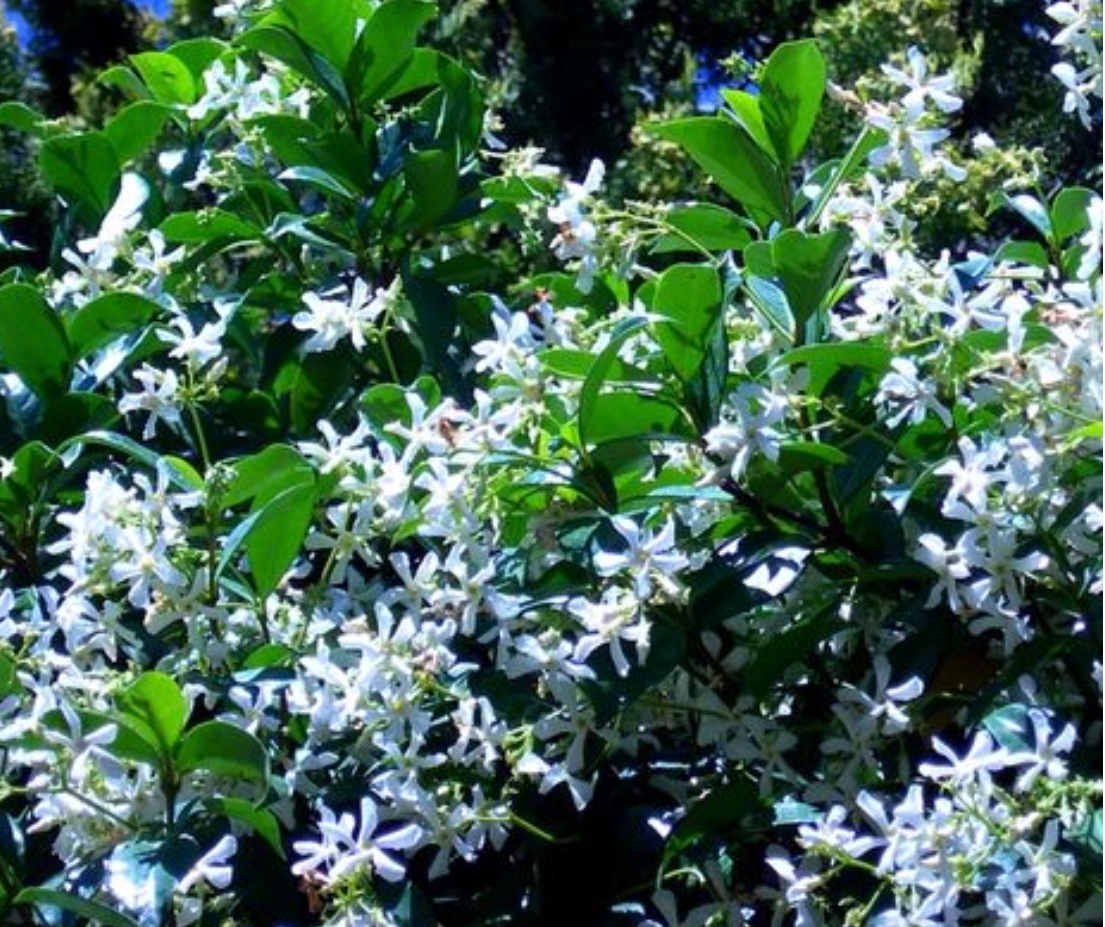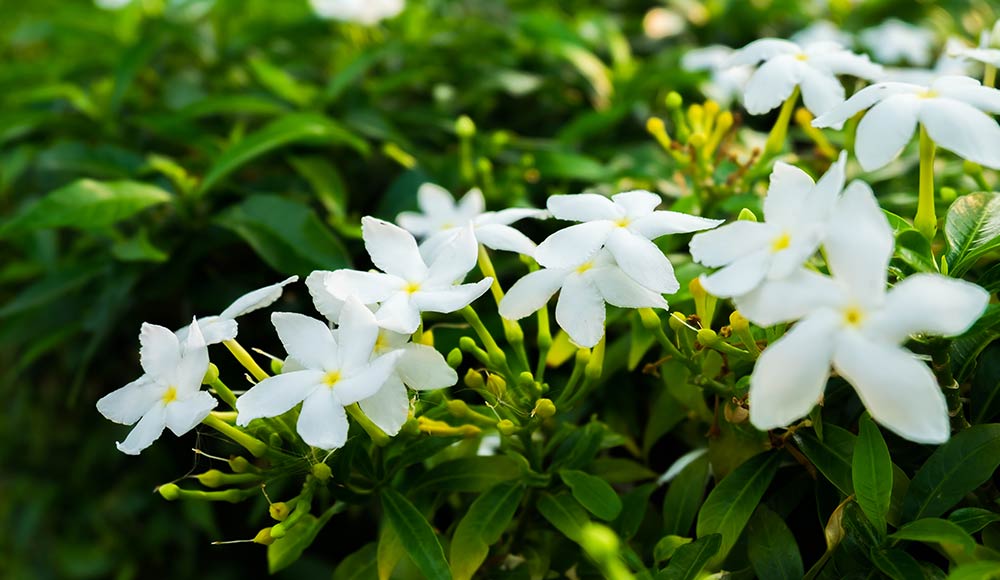Jasmine is already filling the air with a wonderful aroma – with its unique sweet fragrance that can fill a room or a garden with its heady scent.
The flower buds are more fragrant than the flowers, with jasmine flowers releasing their fragrance at night, after sunset.
A native to tropical and warm or temperate regions of the old world, jasmine is believed to have originated in the Himalayas in western China.
Amongst a variety, the Star jasmine plants are ideal for a climbing or ground-covering plant.

Jasmine flowers are in the main white in most species, with some species yellow, with flower oil used in high grade perfumes and cosmetics, including creams, oils, soaps, and shampoos.
Jasmine oil also has anti-inflammatory properties and can be useful in general skin care and treatment of psoriasis.

Jasmine flower has been used in medicine, including for liver disease (hepatitis), liver pain due to cirrhosis, and abdominal pain, due to severe diarrhea (dysentery).
Jasmine is also used as a relaxant – as a sedative – to heighten sexual desire – as an aphrodisiac – and in cancer treatment.
Whether it be in the ground or pots, jasmines grow well in moist, well drained, sandy to clay soil, ideally positioned in full sun-to-partial shade. Water regularly, during summer months.





